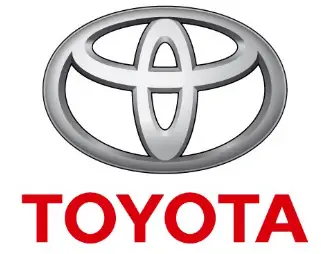2024 Toyota Corolla Maintenance Guidelines
Ensuring the longevity and optimal performance of your 2024 Toyota Corolla is crucial. By implementing a handful of uncomplicated maintenance procedures, you can ensure the continued optimal performance of your vehicle for an extended period of time. By consistently performing routine tasks such as oil changes, tire rotations, fluid level checks, and brake inspections, the owner of a well maintained Corolla can guarantee both safety and the preservation of its value. Let’s examine the extensive maintenance regimen specifically developed to ensure optimal performance and condition of your 2024 Toyota Corolla.
Maintenance data (fuel, oil level, etc.)
Dimensions and weight
|
Overall length |
182.3 in. (4630 mm)*2 |
|
|
Overall width |
70.1 in. (1780 mm) |
|
|
Overall height*1 |
56.5 in. (1435 mm) |
|
|
Wheelbase |
106.3 in. (2700 mm) |
|
|
Tread |
Front |
60.1 in. (1527 mm)*5 |
|
Rear |
59.8 in. (1519 mm)*2 |
|
|
Vehicle capacity weight (Occupants + luggage) |
860 lb. (390 kg) |
|
- Unladen vehicle
- Vehicles without 18-inch tires
- Vehicles with 18-inch tires for Guam and Saip
- Vehicles with 18-inch tires except for Guam and Saipan
- For Guam and Saipa
Seating capacity
- Seating capacity
- 5 (Front 2, Rear 3)
Vehicle identification
Vehicle identification number
The vehicle identification number (VIN) is the legal identifier for your vehicle. This is the primary identification number for your Toyota. It is used in regis-tering the ownership of your vehicle.
On some models: This number is stamped under the right-hand front seat.
This number is also stamped on the top left of the instrument panel.
This number is also on the Certi-fication Label.
Engine number
The engine number is stamped on the engine block as shown.
Engine
|
Model |
2.0 L 4-cylinder (M20A-FKS) |
|
Type |
4-cylinder in line, 4-cycle, gasoline |
|
Bore and stroke |
3.17 ´ 3.84 in. (80.5 ´ 97.6 mm) |
|
Displacement |
121.3 cu. in. (1987 cm3) |
|
Valve clearance |
Automatic adjustment |
|
Drive belt tension |
Automatic adjustment |
Fuel
- Fuel type
- Unleaded gasoline only
|
Octane Rating |
87 (Research Octane Number 91) or higher |
|
|
u Vehicles without 18-inch tires |
|
Fuel tank capacity |
12.4 gal. (47.0 L, 10.3 Imp. gal.) |
|
(Reference) |
u Vehicles with 18-inch tires |
|
|
13.2 gal. (50.0 L, 11.0 Imp. gal.) |
Lubrication system
Oil capacity (Drain and refill [Reference*])
|
With filter |
4.4 qt. (4.2 L, 3.7 Imp. qt.) |
|
Without filter |
4.1 qt. (3.9 L, 3.4 Imp. qt.) |
The engine oil capacity is a reference quantity to be used when changing the engine oil. When actually adding the engine oil, make sure that the oil level is between the low level mark and refill upper limit mark. (ï‚®P.300) Warm up and turn off the engine, wait about 5 minutes, and check the oil level on the dipstick.
Engine oil selection
“Toyota Genuine Motor Oil” is used in your Toyota vehicle. Use Toyota approved “Toyota Genuine Motor Oil” or equivalent to satisfy the following grade and viscosity.
Oil grade: JASO GLV-1
Recommended viscosity: SAE 0W-8 87 (Research Octane Number 91) or higher
- Vehicles without 18-inch tires 12.4 gal. (47.0 L, 10.3 Imp. gal.)
- Vehicles with 18-inch tires 13.2 gal. (50.0 L, 11.0 Imp. gal.)
Outside temperature
SAE 0W-8 is the best choice for good fuel economy and good starting in cold weather.
If SAE 0W-8 is not available, SAE 0W-16 oil may be used However, it must be replaced with SAE 0W-8 at the next oil change.
Oil viscosity (0W-8 is explained here as an example):
-
The 0W in 0W-8 indicates the characteristic of the oil which allows cold startability. Oils with a lower value before the W allow for easier starting of the engine in cold weather.
-
The 8 in 0W-8 indicates the viscosity characteristic of the oil when the oil is at high temperature. An oil with a higher viscosity (one with a higher value) may be better suited if the vehicle is operated at high speeds, or under extreme load conditions.
How to read oil container label:
The Japanese Automotive Standards Organization (JASO) GLV-1 mark is added to some oil containers to help you select the oil you should use.
Cooling system
|
Capacity (Reference) |
6.8 qt. (6.4 L, 5.6 Imp. qt.) |
|
Coolant type |
Use either of the following:
|
Ignition system (spark plug)
|
Make |
DENSO FC20HR-Q8 |
|
Gap |
0.032 in. (0.8 mm) |
NOTICE
Iridium-tipped spark plugs
Use only iridium-tipped spark plugs. Do not adjust the spark plug gap.
Electrical system (battery)
|
|
12.3 V or higher |
|
Open voltage at 68°F (20°C): |
(Turn the engine switch off and turn on the |
|
|
high beam headlights for 30 seconds.) |
|
Charging rates |
5 A max. |
Continuously variable transmission
|
Fluid capacity* |
9.0 qt. (8.5 L, 7.5 Imp. qt.) |
|
Fluid type |
Toyota Genuine CVT Fluid FE |
*: The fluid capacity is a reference quantity.
If replacement is necessary, contact your Toyota dealer.
NOTICE
Continuously variable transmission fluid type
Using continuously variable transmission fluid other than the above type may cause abnormal noise or vibration, or damage the continuously variable transmission of your vehicle.
Brakes
|
Pedal clearance*1 |
4.1 in. (105 mm) Min. |
|
Pedal free play |
0.04 ¾ 0.24 in. (1 ¾ 6 mm) |
|
Brake pad wear limit |
|
|
Parking brake indicator*2 |
When pulling the parking brake switch for 1 to 2 seconds: comes on |
|
Fluid type |
FMVSS No.116 DOT 3 or SAE J1703 |
-
Minimum pedal clearance when depressed with a force of 67.4 lbf (300 N, 30.6 kgf) while the engine is running.
Make sure to confirm that the brake system warning light (yellow) does not illuminate. (If the brake system warning light illuminates,.)
Steering
- Free play
- Less than 1.2 in. (30 mm)
Tires and wheels
Type A
|
Tire size |
195/65R15 91S, T125/70D17 98M |
|
|
|
|
Tire inflation pressure (Recommended cold tire inflation pressure) |
33 psi (230 kPa, 2.3 kgf/cm2 or bar)
|
|
|
60 psi (420 kPa, 4.2 kgf/cm2 or bar) |
|
Wheel size |
15 ´ 6 1/2J, 17 ´ 4T (compact spare) |
|
Wheel nut torque |
76 ft•lbf (103 N•m, 10.5 kgf•m) |
Type B
|
Tire size |
205/55R16 91H, T125/70D17 98M |
|
|
|
|
Tire inflation pressure (Recommended cold tire inflation pressure) |
35 psi (240 kPa, 2.4 kgf/cm2 or bar)
33 psi (230 kPa, 2.3 kgf/cm2 or bar)
|
|
|
60 psi (420 kPa, 4.2 kgf/cm2 or bar) |
|
Wheel size |
16 ´ 7J, 17 ´ 4T (compact spare) |
|
Wheel nut torque |
76 ft•lbf (103 N•m, 10.5 kgf•m) |
Type C
|
Tire size |
225/40R18 88V, T125/70D17 98M |
|
|
|
|
Tire inflation pressure (Recommended cold tire inflation pressure) |
33 psi (230 kPa, 2.3 kgf/cm2 or bar)
30 psi (210 kPa, 2.1 kgf/cm2 or bar)
|
|
|
60 psi (420 kPa, 4.2 kgf/cm2 or bar) |
|
Wheel size |
18 ´ 8J, 17 ´ 4T (compact spare) |
|
Wheel nut torque |
76 ft•lbf (103 N•m, 10.5 kgf•m) |
Type D
|
|
Wheel size |
18 ´ 8J, 17 ´ 4T (compact spare) |
||
|
|
Wheel nut torque |
76 ft•lbf (103 N•m, 10.5 kgf•m) |
||
|
Tire size |
225/40R18 88W, T125/70D17 98M |
|
||
|
|
|
|
||
|
Tire inflation pressure (Recommended cold tire inflation pressure) |
33 psi (230 kPa, 2.3 kgf/cm2 or bar)
30 psi (210 kPa, 2.1 kgf/cm2 or bar)
|
|
||
|
|
60 psi (420 kPa, 4.2 kgf/cm2 or bar) |
|
||
|
Wheel size |
18 ´ 8J, 17 ´ 4T (compact spare) |
|
||
|
Wheel nut torque |
76 ft•lbf (103 N•m, 10.5 kgf•m) |
|
||
Light bulbs
|
|
Light bulbs |
Bulb No. |
W |
Type |
|
Exterior |
Front side marker lights (bulb type) |
— |
5 |
A |
|
Front turn signal /parking lights (vehicles without side turn signal lights) |
7444NA |
28/8 |
B |
|
|
Rear side marker lights (bulb type) |
— |
5 |
A |
|
|
Rear turn signal lights |
— |
21 |
B |
|
|
Back-up lights |
— |
16 |
A |
|
|
Interior |
Trunk light |
— |
5 |
A |
FAQs
The 2024 Toyota Corolla provides a variety of engine choices, one of which is an efficient inline-four engine.
The horsepower and torque of the engine variant may vary, but typically fall within the range of 120 to 170 horsepower and 110 to 150 lb-ft of torque.
The vehicle is equipped with both manual and automatic transmission options, catering to various driving preferences.
Indeed, the engine compartment of Toyota vehicles has been meticulously engineered to provide convenient access to essential components, thereby facilitating effortless execution of maintenance tasks.
The fuel efficiency varies from 30 to 40 MPG, contingent upon the type of engine and prevailing driving conditions.
Indeed, Toyota does provide a hybrid variant of the Corolla, which delivers outstanding fuel efficiency and diminished emissions.
Indeed, the engine compartment of the 2024 Corolla integrates cuttingedge technologies designed to improve performance, including variable valve timing and injection systems.
Regular maintenance adheres to Toyota’s prescribed timetable, typically encompassing oil changes, filter replacements, and inspections at regular intervals of several thousand miles.
The engine of the 2024 Corolla exhibits enhanced efficiency, power delivery, and overall performance in comparison to previous models.
Indeed, Toyota engineers have incorporated sound insulation measures to effectively reduce engine noise and thereby enhance the overall tranquility of the driving experience.
While the safety features within the engine compartment primarily prioritize reliability and performance, the vehicle as a whole incorporates safety systems that safeguard against potential engine problems.
The engine compartment is engineered to be adaptable, enabling specific aftermarket enhancements or alterations while upholding the vehicle’s dependability and warranty.
Toyota generally offers a standard warranty that specifically covers the engine and significant components for a specified mileage or duration.For precise information, it is advisable to refer to the warranty documentation.
The engine’s exemplary performance, coupled with the vehicle’s exceptional handling and comfort, provides a harmonious and pleasurable driving encounter that is well-suited for diverse driving circumstances.
Indeed, comprehensive technical specifications and information regarding the engine compartment can be found in the vehicle’s owner’s manual and can also be obtained from authorized Toyota service centers.
Useful Link
View Full PDF: 2024 Toyota Corolla Owners Manual| Auto User Guide 2024 Toyota Corolla Steering Wheel | Adjustment procedure


